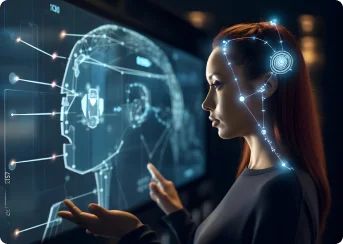1. Introduction
Transfer learning has emerged as a transformative approach in the realm of image classification, allowing models to leverage knowledge gained from previous tasks to enhance performance in new ones. Image classification plays a crucial role across various sectors, including healthcare, security, and autonomous driving, where accurate visual recognition can lead to significant advancements. This article explores the numerous benefits of transfer learning in image classification, highlighting its cost-effectiveness, improved performance, ability to handle limited data, and versatility across applications.
2. Cost-Effectiveness
2.1. Reduced Training Time
One of the primary advantages of transfer learning is the considerable reduction in training time. Traditional image classification models often require extensive training on large datasets, which can take days or even weeks. In contrast, transfer learning allows practitioners to use pre-trained models that have already learned rich feature representations. This results in faster convergence during training, enabling quicker deployment of models in real-world applications.
2.2. Lower Computational Resources
Transfer learning significantly lowers the computational resources required for training models. Instead of training a deep neural network from scratch, practitioners can leverage existing pre-trained models, thereby reducing the demand for high-performance hardware. This cost-effectiveness is particularly beneficial for small organizations or startups with limited resources.
3. Improved Model Performance
3.1. Better Accuracy
Transfer learning often leads to improved accuracy in image classification tasks. Pre-trained models, which have been trained on large, diverse datasets (such as ImageNet), contain learned features that are useful for a wide variety of tasks. Case studies have demonstrated that fine-tuning these models on specific datasets can yield accuracy improvements of several percentage points compared to models trained from scratch.

3.2. Generalization to New Tasks
Transfer learning enhances a model’s ability to generalize to new tasks, particularly those that share similarities with the original training data. For instance, a model trained on recognizing common objects can be adapted to classify specific species of plants or animals with minimal additional training. This capability reduces the amount of labeled data required for new tasks, making it easier to implement models in various domains.
4. Handling Limited Data
4.1. Effective Use of Small Datasets
In many real-world scenarios, acquiring large labeled datasets for image classification can be challenging. Transfer learning enables effective training even with small datasets by allowing models to leverage the extensive knowledge encoded in pre-trained networks. This approach is particularly valuable in niche applications where data scarcity is prevalent, such as medical imaging for rare diseases.
4.2. Mitigation of Overfitting
When training on limited data, models are prone to overfitting, where they learn to memorize the training examples rather than generalizing from them. Transfer learning helps mitigate this issue by providing a strong initialization point from a pre-trained model. Additionally, combining transfer learning with data augmentation techniques can further enhance generalization and model robustness.
5. Access to State-of-the-Art Models
5.1. Utilization of Advanced Architectures
Transfer learning grants practitioners access to state-of-the-art model architectures that have been rigorously tested and refined by the research community. Models like VGG, ResNet, and Inception provide sophisticated feature extraction capabilities that can significantly boost the performance of image classification tasks. Utilizing these architectures as a foundation allows developers to focus on fine-tuning and customization rather than starting from scratch.
5.2. Community Support and Resources
The transfer learning community is supported by a wealth of resources, including pre-trained models available through popular deep learning frameworks like TensorFlow and PyTorch. These resources make it easier for practitioners to implement transfer learning techniques effectively, benefiting from the collective knowledge and advancements made in the field.
6. Versatility Across Applications
6.1. Applications in Various Domains
Transfer learning is applicable across a diverse range of domains, making it a versatile tool for image classification. For example, in healthcare, transfer learning can be used for analyzing medical images to detect conditions like tumors or fractures. In agriculture, it can aid in identifying crop diseases from leaf images. These applications showcase the broad potential of transfer learning to impact multiple industries.
6.2. Transfer Learning for Multimodal Data
Another exciting avenue for transfer learning is its application to multimodal data, where images are combined with other data types (e.g., text or audio). By using transfer learning techniques, models can be trained to analyze and correlate information across different modalities, opening up new possibilities for complex applications such as video analysis or integrated media recognition.

7. Challenges and Considerations
7.1. Domain Shift Issues
While transfer learning offers many advantages, it is not without challenges. One significant issue is domain shift, where the distribution of the source data (used for pre-training) differs from the target data (used for fine-tuning). This can hinder model performance. To address this, practitioners can employ techniques such as domain adaptation to help the model learn to generalize better to the target domain.
7.2. Model Complexity and Interpretability
Transfer learning models, especially deep neural networks, can be complex and difficult to interpret. Understanding how these models arrive at specific decisions can be challenging. Employing techniques for model interpretability and visualization can help users understand the model’s behavior and improve trust in its predictions.
8. Conclusion
Transfer learning has revolutionized image classification by providing numerous benefits, including cost-effectiveness, improved model performance, and the ability to handle limited data. By leveraging pre-trained models and advanced architectures, practitioners can achieve state-of-the-art results across a variety of applications. As the field continues to evolve, understanding and implementing transfer learning will be crucial for driving innovation in image classification tasks.
9. References
- A list of academic papers, articles, and resources for further reading on transfer learning and its benefits in image classification.
FAQs
1. What is transfer learning?
Transfer learning is a machine learning technique where a model developed for one task is reused as the starting point for a model on a second task. It allows for leveraging pre-trained models to improve performance on new tasks, especially when data is limited.
2. Why is transfer learning beneficial for image classification?
Transfer learning is beneficial because it reduces training time, lowers computational resource requirements, improves model accuracy, and enhances generalization to new tasks, all while effectively handling situations with limited labeled data.

3. What are some popular pre-trained models used in transfer learning for image classification?
Popular pre-trained models include:
- VGG16 and VGG19: Known for their deep architectures and good performance on image classification tasks.
- ResNet: Introduces residual connections to allow for very deep networks without the vanishing gradient problem.
- Inception (GoogleNet): Features multi-scale convolutional layers and is efficient in terms of computational resources.
- EfficientNet: Balances model size and accuracy, making it highly effective for various image classification tasks.
4. How can transfer learning be applied to small datasets?
Transfer learning can be applied to small datasets by using pre-trained models that have already learned rich feature representations. Fine-tuning these models on a small amount of new data allows practitioners to achieve good performance without needing extensive labeled data.
5. What are some challenges of using transfer learning?
Some challenges include:
- Domain Shift: Differences between the source and target data distributions can lead to reduced performance.
- Overfitting: Fine-tuning a model on a small dataset may cause it to memorize the training data rather than generalizing.
- Model Complexity: Understanding and interpreting the decisions made by complex models can be difficult.
6. How can domain shift issues be mitigated?
Domain shift issues can be mitigated by employing techniques such as:
- Domain Adaptation: Adjusting the model to better fit the target domain.
- Data Augmentation: Increasing the variability of the training data to improve generalization.
- Fine-tuning strategies: Carefully selecting which layers of the pre-trained model to fine-tune.
7. What are some real-world applications of transfer learning in image classification?
Real-world applications include:
- Medical Imaging: Detecting diseases from medical scans.
- Agriculture: Identifying plant diseases from leaf images.
- Security: Facial recognition and surveillance systems.
- Autonomous Vehicles: Object detection and classification in self-driving cars.
8. What tools and frameworks support transfer learning?
Popular tools and frameworks that support transfer learning include:
- TensorFlow and Keras
- PyTorch
- Fastai
- MXNet
These frameworks provide pre-trained models and easy-to-use APIs for implementing transfer learning.
Tips for Using Transfer Learning in Image Classification
- Choose the Right Pre-trained Model: Select a pre-trained model that aligns well with your specific task and data type for optimal results.
- Experiment with Fine-Tuning: Try different fine-tuning strategies, such as freezing layers and unfreezing certain layers progressively, to find the best balance for your model.
- Utilize Data Augmentation: Apply data augmentation techniques to increase the size and variability of your dataset, which helps improve model robustness.
- Monitor Training Progress: Use visualization tools like TensorBoard to track metrics such as accuracy and loss during training, allowing for adjustments if the model starts to overfit.
- Evaluate on Real-World Data: Always validate your model on real-world scenarios to ensure it performs well outside of the training environment.
- Consider Computational Efficiency: Be mindful of the computational resources available to you and choose models that balance performance with efficiency.
- Stay Updated with Research: Follow the latest advancements in transfer learning and image classification to leverage new techniques and best practices.
- Document Your Process: Keep a record of experiments, settings, and results to refine your approach over time and understand what works best for your specific applications.